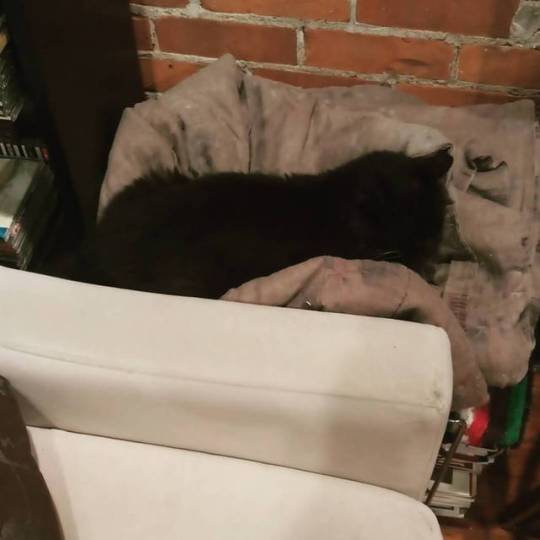#cantus articus
Text
youtube
Rautavaara - Cantus Articus (1972)
Here one could see another example of a 20th century composer "leaving" behind a modernest style of writing to "revert" to a Neo-Romantic / Neo-Tonal style. This is sometimes used as an argument to show that the extended techniques of modernism have been exhausted and that there was no creative future in the avant-garde, and all this is used to reaffirm a kind of conspiracy or propaganda that "modern classical music isn't enjoyable" "it's just noise" "see even this big name composer agrees!". Maybe there are some people who believe that, but in this case it isn't so fitting. Even when Rautavaara was in his twelve tone days, his music still prioritized lyricism. If anything starting with ultramodernism helped as a foundation for his more characteristic style, which is the typical progression of a composer's creative life: get a foundation in the tradition, and focus on what you like until you find 'your voice'. In this work, a "Concerto for Birds and Orchestra", Rautavaara combines his lyricism and extended neo-romantic tonality and cluster chords with recordings of birdsong written to blend together as if the birds were like earlier imitations of birdsong in other parts of the tradition (Vivaldi, Beethoven, Schumann, Messiaen, etc. etc.) His inspiration came from the commissioner. Rautavaara was asked by the University of Oulu to write something for a graduation ceremony. The university is farther north of Helsinki and the composer said its "Arctic" location inspired him to incorporate northern birdsong recordings, instead of writing a more traditional or expected graduation cantata. In his own words;
The bird sounds were taped in the Arctic Circle and the marshlands of Liminka [a municipality in the former province of Oulu, in Northern Finland]. The first movement, Suo (The Bog), opens with two solo flutes. They are gradually joined by other wind instruments and the sounds of bog birds in spring. Finally, the strings enter with a broad melody that might be interpreted as the voice and mood of a person walking in the wilds. In Melankolia (Melancholy), the featured bird is the shore lark; its twitter has been brought down by two octaves to make it a “ghost bird.” Joutsenet muuttavat (Swans Migrating) is an aleatory texture with four independent instrumental groups. The texture constantly increases in complexity, and the sounds of the migrating swans are multiplied too, until finally the sound is lost in the distance.
Regardless of ideological biases, there is agreement that the unique use of recording technology incorporated in engaging orchestral writing makes this concerto a modern classic.
#Rautavaara#cantus articus#music#classical#orchestra#orchestra music#classical music#symphony orchestra#recording#birdsong#20th century classical music#20th century music#postmodern music#postmodernism#concerto#Einojuhani Rautavaara#Rautavaara Cantus Articus#mikrokosmos#Youtube
23 notes
·
View notes
Audio
me cala hondo hasta los huesos :') 🎶
4 notes
·
View notes
Photo

Ms. Elvira, listening to "Cantus Articus", by Einojuhani Rautavaata. It must be all the pre-recorded bird song that has her attention.
1 note
·
View note
Quote
エイノユハニ・ラウタヴァーラ(Einojuhani Rautavaara 1928年10月9日 - 2016年7月27日)は、フィンランドの現代音楽の作曲家。
生涯[編集]
ヘルシンキに生まれる。1948年から1952年まで、ヘルシンキのシベリウス・アカデミーにてアーッレ・メリカントに師事。後に、シベリウスの勧めでニューヨークのジュリアード音楽院に移る。ジュリアード音楽院では、ヴィンセント・パーシケッティに師事するほか、タングルウッド音楽センターにてセッションズとコープランドのレッスンも受けている。ラウタヴァーラは、1954年にThor Johnson Contestへ出品した「我らの時代のレクイエム A Requiem in Our Time」で国際的な注目を集めた。
1957年から1959年まで、シベリウス・アカデミーにて短期の講師として働いた後、1959年から1961年までヘルシンキ・フィルハーモニックのアーキヴィストとして働いた。1965年から1966年までは、Käpylä Music Institute in Helsinkiの学長を務め、1966年から1976年まで、再びシベリウス・アカデミーにて講師になった。そのうち、1971年からは国家任命の芸術教授となった。1976年から1990年までは、シベリウス・アカデミーにて作曲学の教授に就いた。2004年に急病に倒れたものの、すぐに回復している。
ラウタヴァーラは多作の作曲家であり、さまざまな形式やスタイルで作品を発表している。彼の作品は、楽譜も容易に手に入れることが出来る。ラウタヴァーラは初期にセリー主義へ傾倒し、たとえば交響曲第3番ではセリアルな語法が目立つが、ブーレーズのような難解なセリー音楽ではなく、ブルックナーのようなきわめて明快な音楽を作る傾向にあった。しかし1960年以降はセリー主義を離れ、それ以後の作品では題名に「天使」などの語が織り込まれ、清澄で神秘的な要素を帯びてくる。こうしたラウタヴァーラの音楽では、弦楽器による簡素で民俗的な主題や、旋回するフルートの旋律、ベルによる静かな不協和音、牧歌的なホルンが特徴的なものとして挙げられる。
ラウタヴァーラの作品は、8つの交響曲のほか、いくつかの協奏曲、声楽曲、さまざまな楽器のためのソナタ、弦楽四重奏曲、その他室内楽曲、そしてたくさんのオペラなど、広いジャンルに亘る。 また、テープのためのパートが与えられた作品も多く、「カントゥス・アルティクス Cantus articus」(テープに録音された鳥の声と管弦楽のための協奏曲)や、合唱と管弦楽とテープのための「真実と偽りのユニコーン True and False Unicorn」が名高い。
ラウタヴァーラの作品の多くは既に録音されているが、なかでもレイフ・セーゲルスタム指揮によるヘルシンキ・フィルハーモニック・オーケストラの交響曲第7番「光の天使」は大成功を収めており、1997年度のグラミー賞にノミネートされた。
作品[編集]
管弦楽曲[編集]
交響曲
交響曲第1番
交響曲第2番「シンフォニア・インティマ」
交響曲第3番
交響曲第4番「アラベスカータ」
交響曲第5番
交響曲第6番「ヴィンセンティアーナ」
交響曲第7番「光の天使」
交響曲第8番「旅」
鳥と管弦楽のための協奏曲「カントゥス・アルティクス(北の歌)」
ピアノ協奏曲第1番
ピアノ協奏曲第2番
ピアノ協奏曲第3番「夢の贈りもの」
ヴァイオリン協奏曲
チェロ協奏曲
コントラバス協奏曲「黄昏の天使」
フルート協奏曲
クラリネット協奏曲
ハープ協奏曲
アポテオーシス
ベラ・バルトークのためのエピタフ
ゾルタン・コダーイへのオマージュ
フランツ・リストへのオマージュ
カントI-IV
至福の島(Lintukoto)
幻想の書(Book of Visions)
マンハッタン3部作
室内楽曲[編集]
我らの時代のレクイエム
チェロとピアノのための「2つの前奏曲とフーガ」
クラリネットとピアノのための「ソネット」
フルートとギターのためのソナタ
独奏曲[編集]
村の音楽師(ピアノ)
イコン(ピアノ)
エチュード集(ピアノ)
ピアノソナタ第1番「キリストと漁夫」
ピアノソナタ第2番「火の説法」
ナルキッソス
パッショナーレ
舞台作品[編集]
鉱山
アポロ対マルシアス
サンポの神話
トマス
ヴィンセント
太陽の家
マギの贈り物
アレクシス・キヴィ
ラスプーチン
声楽曲[編集]
シェイクスピアの3つのソネット
オルフェウスへの5つのソネット
言葉の遊戯
ガルシア・ロルカの詩による組曲
合唱曲[編集]
アヴェ・マリア
ハマーショルド断章
子供のミサ
クレド
T.S.エリオットによる2つのプレリュード
人生の書(Elämän kirja)
https://ja.wikipedia.org/wiki/エイノユハニ・ラウタヴァーラ
0 notes
Audio
Thought it was about time I put some music on here, so we’ll start with my favourite piece ever. It reminds me of the emptiness of November.
(In case you can’t figure out why you’ve never heard instruments like these before, realise that half of them are birds.) And wait for the 3:00 mark, cause that's when it really gets good. Then go listen to the last two movements.
0 notes
Audio
0 notes
Note
Top 5 composers you haven't listened to much, but want to hear more of
This sounds like a fun one! I won’t do this in top five order, rather they’re listed as they come to mind
1. Nikolai Roslavets. A Russian modernist, I’ve heard a few of his piano sonatas and chamber works, and they’re awesome. Like Scriabin pushed to the next level.
2. Lili Boulanger. Her oeuvre is small because she died young, so it would be easy to go through her handful of compositions. I’ve heard a few orchestral works and a Psalm setting, and it’s pretty cool.
3. John Adams. The “minimalist” American composer. He’s known for his operas, and I’ve heard a handful of some orchestral music, but looking over his blog I noticed he has so many pieces under his belt. I’ll need to check them out.
4. Einojuhani Rautavaara. I’ve only listened to one of his symphonies, his piano concertos, and his Cantus Articus for orchestra and recorded birdsong. Beautiful music, a lot I haven’t looked into yet.
5. Karol Szymanowski. I’ve been into this composer for a while now, but I spent most of my time listening over the same few works to “get” them better [they aren’t easy listening]. So I’ve got two symphonies, a few violin and piano pieces, a set of orchestral songs, and a ballet. I need more!!!
16 notes
·
View notes